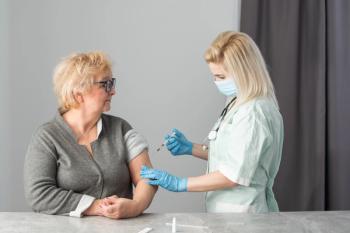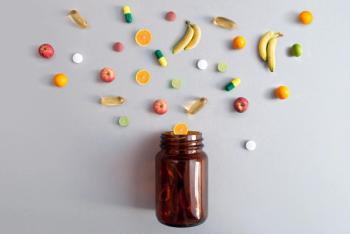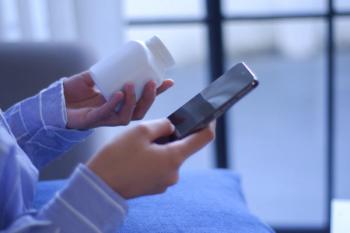
- Drug Topics June 2024
- Volume 168
- Issue 05
Stopping the Syndemic: Pharmacy at the Intersection of HIV and Injection Drug Use
As the opioid crisis and injection drug use continue, pharmacists can look to previous outbreaks to guide their responses to the HIV–injection drug use syndemic.
It was announced in a news release: On February 25, 2015, the Indiana Department of Health acknowledged a “quickly spreading” outbreak of HIV in the southeastern part of the state.1 Since mid-December 2014, 26 new cases of HIV had been confirmed. Of those cases, only a handful were associated with sexual transmission. The rest were associated with injection drug use—specifically, intravenous injection of oxymorphone hydrochloride (Opana ER), a powerful opioid painkiller. The drug, the agency noted, is “more potent, per milligram, than OxyContin.”1
In 2015, the US was in the midst of the second wave of the
According to the National Institute on Drug Abuse, a drug becomes popular because it’s available.6 Heroin from Colombia and Mexico began to take hold in the US, edging out heroin sourced from southeast and southwest Asia. “That heroin got here every year cheaper and every year more potent,” said author Sam Quinones during a 2022 appearance at a National Institute on Drug Abuse Director’s Special Lecture.7 Quinones is a former Los Angeles Times reporter who has written extensively on the injection drug use epidemic.
In reality, it was heroin’s low cost—not its purity—that was a root cause of the overdose problem. In 2014, research findings published in Addiction indicated that “each $100 decrease in the price per gram of pure heroin” led to a 2.9% increase in heroin-related overdose hospitalizations.5 Compared with OxyContin, the price of pure heroin was significantly cheaper: In 2015, a gram of heroin retailed for an average of $267.8 A single-dose bag, typically 0.1 g, retailed for between $5 and $20,9 making the drug a cheap and convenient substitute for the opioid pills that were becoming much more difficult to get.
Adverse Outcomes of Injection Drug Use
In addition to the adverse health outcomes associated with regular opioid use, the intravenous administration of these drugs can lead to additional health concerns, from lesions to collapsed veins to infective
Back in 2015 in Scott County, Indiana, rates of HIV diagnoses among individuals who injected drugs continued to rise. Ultimately, a total of 215 HIV infections were recorded, 167 of whom were coinfected with hepatitis C virus (HCV) either before or during the outbreak.12-14 And although this particular outbreak is behind us, the co-occurrence of HIV infections, HCV infections, and injection drug use persists. In
According to the National Institute of Drug Abuse, there have been at least 9 documented HIV outbreaks associated with shared and reused syringes since 2014.17 Researchers found that in addition to the prevalence of substance use disorder, individuals impacted by these outbreaks were more likely to have lower levels of education and to be living in poverty. On the whole, these individuals also struggle to access quality, evidence-based health care; are faced with racism, homophobia, and transphobia, in addition to HIV- and substance use disorder– related stigma in health care settings; and experience higher rates of intimate partner violence, particularly among women. Together, these factors paint a grim picture.
Understanding Harm Reduction
However, there is hope in the form of harm reduction, an evidence-based approach which has been deemed “critical to engaging with people who use drugs and equipping them with lifesaving tools and information.”18 It is, according to the Substance Abuse and Mental Health Services Administration, a “key pillar” in the US Department of Health and Human Services Overdose Prevention Strategy.18
Harm reduction encompasses a “spectrum of strategies” intended to “meet drug users where they’re at,” according to the National Harm Reduction Coalition,19 addressing the conditions of drug use along with the drug use itself (see Sidebar19). On a policy level, these principles require direct engagement with people who use drugs to deliver interventions that are designed with specific individual and community needs in mind. In practice, harm reduction empowers people who use drugs by providing tools that prevent overdose and infectious disease transmission and improve physical,
Perhaps unsurprisingly, harm reduction is an area where pharmacists can shine. Pharmacists are already practicing harm reduction in the course of delivering standard care to patients: screening for risk factors that might lead to drug use, considering adverse childhood experiences, and balancing other social determinants of health that factor into the delivery of trauma-informed, team-based care.20 Building on that framework, the jump to providing harm reduction services specific to the current HIV-injection drug use syndemic is easy to envision.
Pharmacists have been acknowledged as a “key, but underutilized resource” in the harm reduction space, according to a brief published by the National Alliance of State and Territorial AIDS Directors (NASTAD),21 because of not only their accessibility but also their ability to develop genuine relationships with the patients in their care. “The profession of pharmacy is well-poised to have a positive impact on reducing opioid-related harm on both individual and population levels,” wrote the authors of a 2022 review of the pharmacist’s role in the opioid crisis, which was published in Substance Abuse and Rehabilitation.22
Dispensing naloxone, screening for HIV infection, dispensing HIV pre- or postexposure prophylaxis (PrEP, PEP), and providing syringe service programs are just a few of the harm reduction methods in which pharmacists can engage. However, there are challenges, ranging from stigma around PReP and PEP medications in certain patient populations to patient access in rural areas and varying state-level legal authority for pharmacists to prescribe these medications. Not every state grants pharmacists the legal authority to dispense naloxone to patients without a prescription from a primary care provider, and there are several limiting factors around the sale of nonprescription syringes, including individual pharmacists’ personal beliefs.
Much like the substance use they are designed to address, syringe services programs, or needle exchange programs, face stigma of their own.23,24 But despite that stigma, data suggest that these programs are associated with positive outcomes, including an approximately 50% reduction in the incidence of HIV and HCV, and, when combined with medication-assisted therapy for opioid use disorder, can reduce HIV and HCV transmission by more than two-thirds. Crucially, research has found that syringe service programs do not increase drug use; instead, they may actually provide support and motivation to people who inject drugs to change their behaviors and enter treatment or rehabilitation programs.25
Researchers have analyzed the data from the 2015 Scott County outbreak and have largely concluded that the timely implementation of harm reduction efforts likely could have prevented the HIV outbreak before it began.13 Today,
READ MORE:
Pharmacy practice is always changing. Stay ahead of the curve: Sign up for our
References
1. HIV outbreak in southeastern Indiana. News release. Indiana State Department of Health. February 25, 2015. Accessed May 24, 2024. https://www.in.gov/health/hiv-std-viral-hepatitis/files/February_25__Outbreak_in_Southeastern_Indiana.pdf
2. Duff JH, Shen WW, Rosen LW, Lampe JR. The opioid crisis in the United States: a brief history. Congressional Research Service. November 30, 2022. Accessed May 24, 2024. https://crsreports.congress.gov/product/pdf/IF/IF12260
3. U.S. overdose deaths decrease in 2023, first time since 2018. News release. CDC National Center for Health Statistics. May 15, 2024. Accessed May 24, 2024. https://www.cdc.gov/nchs/pressroom/nchs_press_releases/2024/20240515.htm
4. Provisional drug overdose death counts. CDC National Vital Statistics System. Reviewed May 15, 2024. Accessed May 24, 2024. https://www.cdc.gov/nchs/nvss/vsrr/drug-overdose-data.htm
5. Dryden J. Drug users switch to heroin because it’s cheap, easy to get. Washington University in St. Louis. May 28, 2014. Accessed May 24, 2024. https://source.wustl.edu/2014/05/drug-users-switch-to-heroin-because-its-cheap-easy-to-get/
6. Heroin use is driven by its low cost and high availability. National Institute on Drug Abuse. January 2018. Accessed May 24, 2024. https://nida.nih.gov/publications/research-reports/prescription-opioids-heroin/heroin-use-driven-by-its-low-cost-high-availability
7. Talesnik D. Quinones sequel examines changing addiction crisis. NIH Record. 2022;74:3. https://nihrecord.nih.gov/2022/02/04
8. Unick G, Rosenblum D, Mars S, Ciccarone D. The relationship between US heroin market dynamics and heroin-related overdose, 1992-2008. Addiction. 2014;108(11):1889-1898. doi:10.1111/add.12664
9. Heroin and cocaine prices in Europe and USA. United Nations Office on Drugs and Crime. Accessed May 24, 2024. https://dataunodc.un.org/drugs/heroin_and_cocaine_prices_in_eu_and_usa-2017
10. Zinnia Health editorial staff, Hill R. How much does heroin cost? (The street prices). Zinnia Health. September 14, 2023. Accessed May 24, 2024. https://zinniahealth.com/substance-use/heroin/costs
11. Opioids and injection drug use. Minnesota Department of Health. Updated October 3, 2022. Accessed May 24, 2024. https://www.health.state.mn.us/communities/opioids/basics/intravenous.html
12. Muncan B, Walters SM, Ezell J, Ompad DC. “They look at us like junkies”: influences of drug use stigma on the healthcare engagement of people who inject drugs in New York City. Harm Reduct J. 2020;17(1):53. doi:10.1186/s12954-020-00399-8
13. Greenwood M. New study finds HIV outbreak in Indiana could have been prevented. YaleNews. September 13, 2018. Accessed May 24, 2024. https://news.yale.edu/2018/09/13/new-study-finds-hiv-outbreak-indiana-could-have-been-prevented
14. Gonsalves GS, Crawford FW. Dynamics of the HIV outbreak and response in Scott Country, IN, USA, 2011-15: a modelling study. Lancet HIV. 2018;5(10):E569-E577. doi:10.1016/S2352-3018(18)30176-0
15. Peters PJ, Pontones P, Hoover KW, et al; Indiana HIV Outbreak Investigation Team. HIV infection lined to injection use of oxymorphone in Indiana, 2014-2015. N Engl J Med. 2016;375(3):229-239. doi:10.1056/NEJMoa1515195
16. Defining the term “syndemic.” HIV.gov. April 29, 2024. Accessed May 24, 2024. https://www.hiv.gov/blog/defining-the-term-syndemic
17. Volkow N. Still reaching: the syndemics that complicate and characterize how drugs and HIV intersect in people’s lives. National Institute on Drug Abuse. May 30, 2023. Accessed May 24, 2024. https://www.hiv.gov/blog/defining-the-term-syndemic https://nida.nih.gov/about-nida/noras-blog/2023/05/still-reaching-syndemics-complicate-characterize-how-drugs-hiv-intersect-in-peoples-lives
18. Harm reduction. Substance Abuse and Mental Health Services Administration. Updated April 24, 2023. Accessed May 24, 2024. https://www.samhsa.gov/find-help/harm-reduction
19. Principles of harm reduction. National Harm Reduction Coalition. Accessed May 24, 2024. https://harmreduction.org/about-us/principles-of-harm-reduction/
20. Bratberg JP, Kubicsko D. Meeting people where they’re at: a focus on pharmacist harm reduction roles in the opioid crisis. J Am Coll Clinical Pharm. 2020;3(2):400-403. doi:10.1002/jac5.1216
21. Pharmacist-initiated harm reduction services. National Association of State and Territory AIDS Directors. Accessed May 28, 2024. https://nastad.org/sites/default/files/2023-08/PDF-Pharmacist-Initiated-Harm-Reduction-Services-Issue-Brief.pdf
22. Kosobuski L, O’Donnell C, Koh-Knox Sharp CP, Chen N, Palombi L. The role of the pharmacist in combating the opioid crisis: an update. Subst Abuse Rehabil. 2022;13:127-138. doi:10.2147/SAR.S351096
23. Syringe services programs. CDC. Reviewed August 7, 2023. Accessed May 28, 2024. https://www.cdc.gov/hiv/effective-interventions/prevent/syringe-services-programs/index.html
24. Syringe services programs. National Institute on Drug Abuse. June 2021. Accessed May 28, 2024. https://nida.nih.gov/research-topics/syringe-services-programs#do-syringe-services
25. Surratt HL, Otachi JK, Williams T, Gulley J, Lockard AS, Rains R. Motivation to change and treatment participation among syringe service program utilizers in rural Kentucky. J Rural Health. 2020;36(2):224-233. doi:10.1111/jrh.12388
26. Parr GL, Spott A. Enhancing harm reduction and PrEP/PEP services through community pharmacies. National Association of State and Territory AIDS Directors. August 17, 2023. Accessed May 28, 2024. https://nastad.org/blog/enhancing-harm-reduction-and-preppep-services-through-community-pharmacies
Articles in this issue
over 1 year ago
Diabetes and the Skin: Complications and Prevention Tipsover 1 year ago
Pharmacy in the Digital Ageover 1 year ago
Redefining Pharmacy Education for LGBTQ Pain Managementover 1 year ago
Q&A: How The 2024 Election Looms Large Over Pharmacyover 1 year ago
Q&A: Navigating the Exponential Growth of Specialty Drugsover 1 year ago
Q&A: Understanding Future Impacts of the IRANewsletter
Pharmacy practice is always changing. Stay ahead of the curve with the Drug Topics newsletter and get the latest drug information, industry trends, and patient care tips.































































































































































